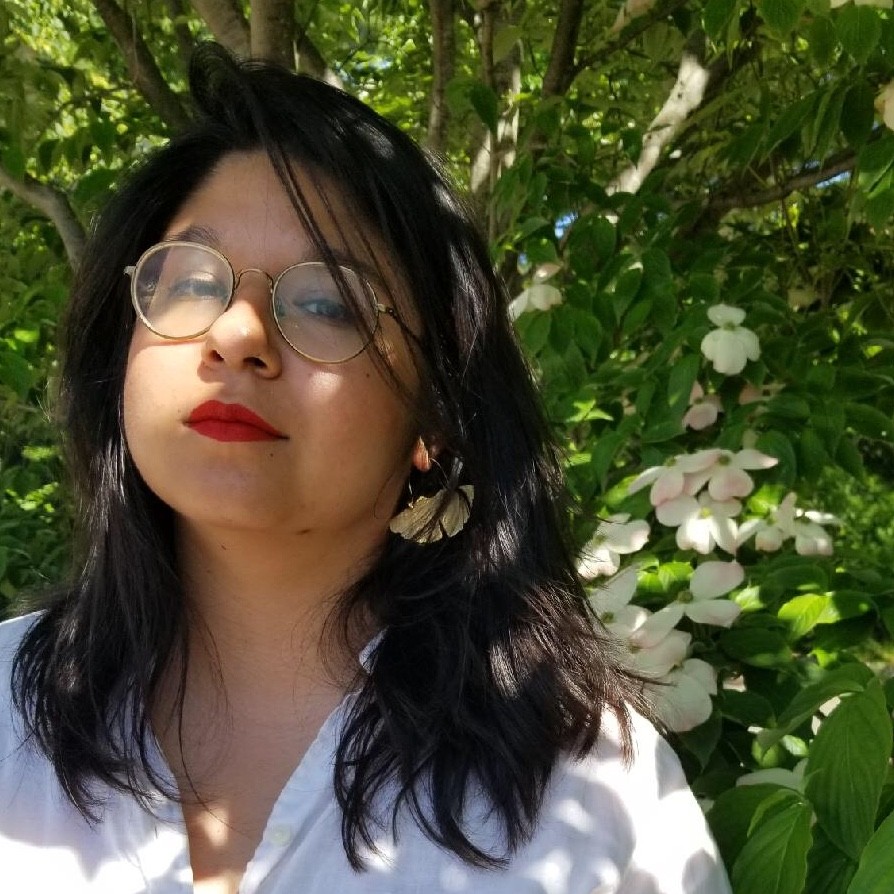Accompanying immigrants as they negotiate an unjust system
"It’s easy to think of the border as some remote, far-off place, but the truth is that there are detention centers in nearly every state."

Alejandra Oliva, who recently graduated from Harvard Divinity School, works as communications coordinator at the National Immigrant Justice Center, an organization that provides legal assistance to immigrants. Last year she visited the border between San Diego and Tijuana, where she provided translation and accompaniment services to people seeking asylum as they waited to cross into the U.S.
How did you first become interested in working with migrants at the Mexico border?
I got into this work by reading Valeria Luiselli’s Tell Me How It Ends. In it, she describes interpreting for children who came across the border during the 2014 unaccompanied child migrant crisis. As I read, I realized for the first time that I could do something about the ways that immigrants were encountering the United States and the immigration system. So I started working as a volunteer interpreter for people who were applying for asylum. Later I began doing immigration court observation, and eventually I was able to travel to Tijuana to see what the border is actually like.
Is there a story about someone you’ve worked with at the border that stays with you and gives you energy for this work?
One of the days I was in Tijuana, there was a boy who hung out in the office almost all day. He was very quiet and careful with his coloring. He put each crayon away before selecting a new color. He, his mom, an aunt, and a baby cousin were getting ready to cross the border that day. They had been stuck in Tijuana for a few months, waiting for their number to be called, and it finally was.
I can imagine that those few months were particularly hard for them, because they were black. At the border, anti-blackness intersects with anti-immigrant sentiment to create difficult conditions, like poor treatment from government officials and an inability to get medical care.
Crossing the border at that point usually involved a few days in detention centers, even for kids. I think the boy’s mom and aunt knew as they lined up that day that they were getting in line to go to prison before making their case to an asylum officer. When one of the clergy volunteers offered to pray with the family, this little boy asked for the prayer to be in English so he could start learning the language.
I think about him and his family all the time, especially when I hear rhetoric about people “not assimilating.” I think about how ready he was to be here. And I think about the kind of irreparable damage we do when we incarcerate people who have broken no laws and are coming here to be safe.
Tell us about the National Immigrant Justice Center. What’s at the heart of the work you do?
NIJC is an organization dedicated to providing legal services to people living at the intersection of immigration and poverty. This includes direct services—helping people apply for asylum, get out of detention, get their green cards and work permits, etc.—as well as litigation and policy-based work in Washington D.C. We’re a program of Heartland Alliance, which is dedicated to justice across a variety of issues and platforms, including housing, medical care, and human rights.
As we continue to hear stories of ICE raids and deportations and learn about conditions in detention centers, it can feel overwhelming to think about how we might respond. What are some concrete, timely, and trustworthy ways individuals can become involved?
There are some obvious responses, like giving to immigrants’ rights organizations and calling elected officials. At NIJC, we put together a toolkit for encouraging local elected officials to make unannounced visits to nearby ICE detention centers, as an important step to convince Congress to stop pouring tax dollars into ICE’s abusive and unnecessary immigration prison system.
There are also some less obvious ways people can help. You can give specifically to organizations that help with bond payments. Bonds for people in immigration detention are often far higher than those in criminal proceedings. People are often not in a position to pay these high bonds, which means that they stay incarcerated for a long time.
There’s also a really deep need for people with language abilities—Spanish, French, Arabic, you name it—to step in and do accompaniment and interpretation for people. This doesn’t necessarily mean going with people to court. I know volunteers who accompany folks going to doctor’s offices and help them figure out the local grocery store.
It’s easy to think of the border as some remote, far-off place, but the truth is that there are detention centers in nearly every state, and there are undocumented people living in all kinds of communities. The most important thing you can do is to learn about the work that’s already being done in your area and figure out how you can plug in. NIJC has an ambassador toolkit to provide some ideas for what that could look like.
These problems may feel particularly big and bad now, but the reality is that things have been bad for a long time. There are already all kinds of community-driven responses, and most of them need more hands on deck.
How can congregations best get involved in advocacy for migrants, folks at the border, and people seeking asylum? Are there both short-term and long-term needs that congregations might be able to fulfill?
Congregations have an important role in immigration and asylum conversations. You may have seen stories about people taking sanctuary in churches—your community might think about whether or not that’s something you’re willing or able to take on. The New Sanctuary Movement has a good set of resources on their website. You could also come together as a community to support and sponsor a family and help get them out of detention.
In Chicago, Interfaith Community for Detained Immigrants started out as a small group organized by two Sisters of Mercy holding weekly vigils outside a local ICE processing center. The group now also conducts weekly visits at local ICE jails and has even established a housing program for asylum seekers. Their program has become a model for community-based alternatives to detention, which are a healthier solution for welcoming immigrants than the jails that have become our government’s default.
Their work is a reminder that actions taken by religious communities can be more robust than those of an individual. Congregations might host a community fundraiser for a nonprofit organization that helps immigrants or show up en masse to an elected official’s office to demand action. Protests have a lot of moral force when they’re rooted in a faith tradition, like those organized by Never Again Action and Catholic Day of Action.
What class at Harvard best prepared you for the kind of work you’re doing now at NIJC?
Stephanie Paulsell’s class on contemplative prayer helped me do a lot of the mental and emotional preparation that’s necessary for this kind of work. One essay on the syllabus was Simone Weil’s essay about school studies, which helped me think about how even our failures can lead us into a form of attention toward God and our suffering neighbors that makes it easier to get up every morning ready to take up the battle against systems that feel immovable. I also took a class on global warming, grief, and joy that was taught by Terry Tempest Williams and Matt Potts. There I began to develop an ethic of not looking away, and I found some new ways of thinking about societal grief that feel useful on the hard days.
If you could create one class that all seminarians were required to take, what would it be?
I’d create a class that’s really explicit about the ties we can make between social justice and religion. It would focus on the ways in which we can, and always should, bring the injustices we see out in the world into our spaces of worship, and arm congregations with the feeling that they can do something about it. I’d love for it to be a requirement for pastors to understand themselves (at least in part) as community organizers. In addition to everything else pastors do, part of leading a religious community should involve helping folks engage with the outside world.







